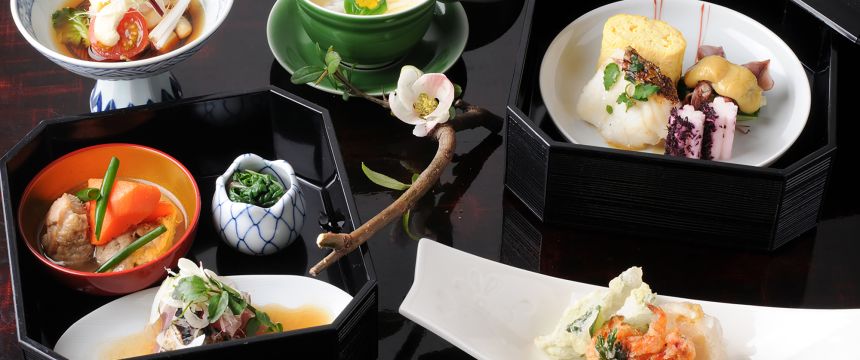Odaiba, Tokyo – Kanto
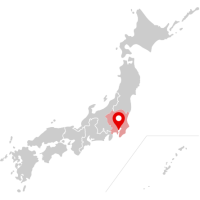
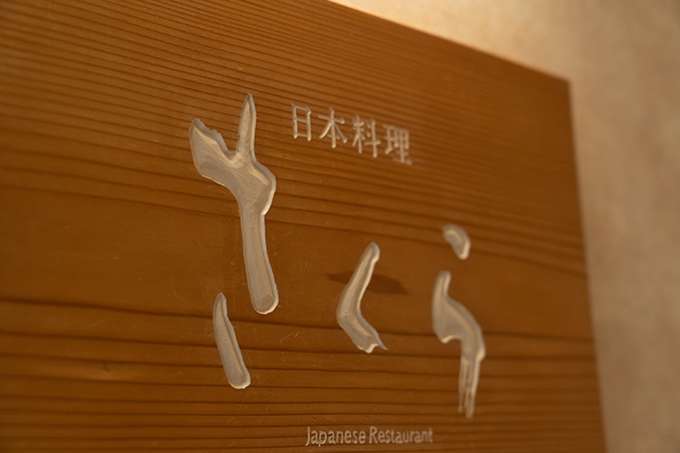
If you visit Japan and stay at one of the finer hotels, it is quite likely that you will find there a Japanese restaurant where you can try kaiseki ryori. Kaiseki ryori is the haute cuisine of Japanese culinary culture and is not to be missed. If you want to taste some of the best food Japan has to offer, this is your chance. Do not be put off by a menu you can’t read—think of it as part of a culinary adventure! At hotels like the Hilton Tokyo Odaiba, there are of course Western food options, but why not take this opportunity to try something new? During your trip to Japan, you might want to stay at a luxury ryokan (traditional Japanese inn) that serves only kaiseki ryori, so you need to be well prepared. Head chef Saito Eisuke at the Japanese Restaurant Sakura was on hand to explain to us the finer points of enjoying kaiseki ryori.
So, what is kaiseki ryori? There are two ways of writing kaiseki in Japanese kanji characters. One of these comes from the cultural tradition of tea ceremony and originally referred to a set of three small, simple dishes plus rice served before tea. The other kanji means a get-together or banquet. Today, the characters more commonly used are the former, but they have a spirit more like the latter. Most kaiseki ryori consists of about ten courses, but the courses may vary with the restaurant and the season. Just expect a full and not a light meal.
Some Basic Manners Sure to Impress
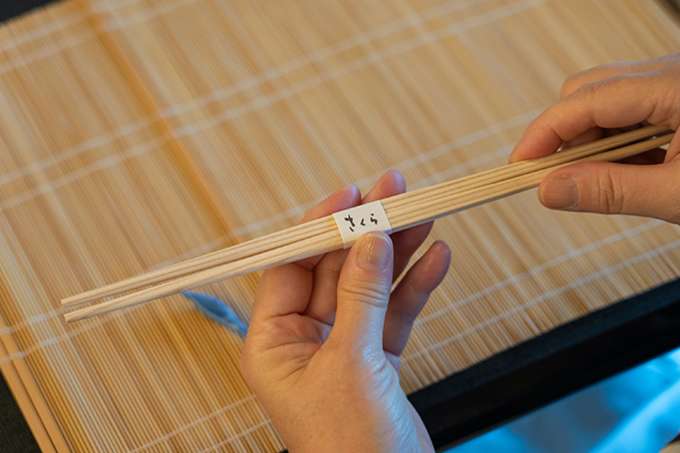
Here are some simple guidelines for good kaiseki manners, so you can relax and enjoy kaiseki like a native of Japan. Try not to tear the paper sleeve that encircles the middle of the ohashi (chopsticks). Instead, carefully slide the ohashi out of the paper sleeve. You eat from the very tip of the ohashi and, between bites, rest the used end on the hashioki (chopstick rest), extending it slightly out in front with the unused part of the ohashi resting on the table. Ohashi should not be used to push, prod, or poke at food, just to delicately lift it to your mouth.
The food will usually be served from the right side, and sometimes the next dish will be placed on the table before everyone has finished the previous one. The servers will remove the empty dishes as diners finish the contents. When soup is served, the lid should be removed right away, before a vacuum forms. If this happens, it is better to ask a server for help rather than struggling with the lid and possibly spilling the soup. After finishing the soup, you should replace the lid on the bowl with the top up, as it was when the soup was served, not inverted. Soup can be lifted to your mouth and the rice bowl raised in your hand when you eat, but other dishes should remain on the table throughout the meal. Of course, if you are struggling with ohashi and a particular dish then it is best to lift the tableware up in order to avoid an accident.
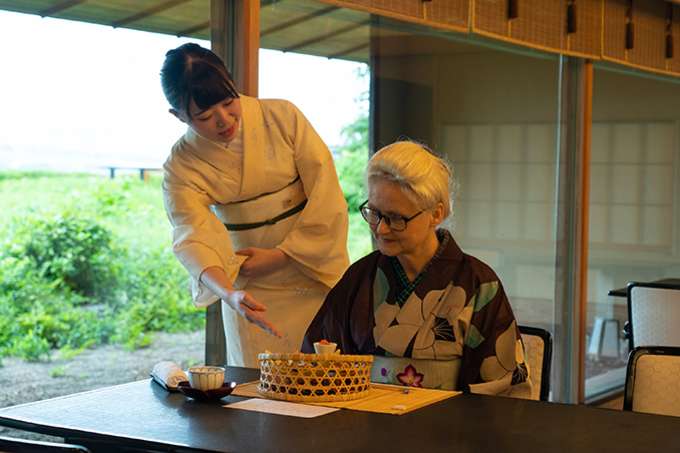
The Kaiseki Experience
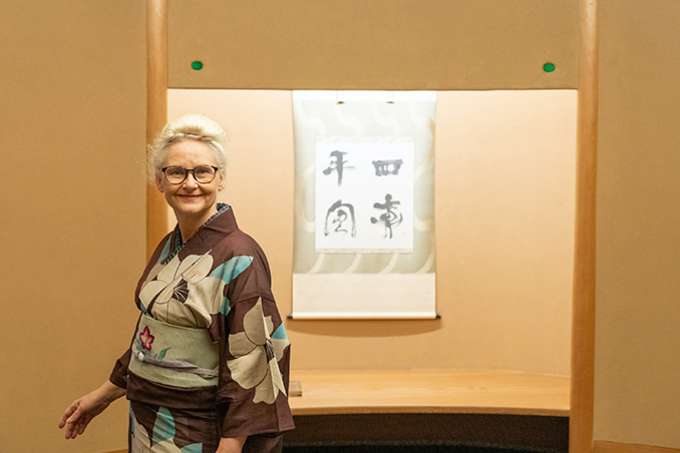
Japanese fine dining is a sensual experience. Usually the restaurant itself is beautifully designed with a Japanese aesthetic revealed in the truth to materials, the quality woodwork, the paper shoji windows, the view of a Japanese garden, the tatami mats, the Japanese-style alcoves, the wall hangings, and in other features. This aesthetic continues in the presentation of the dishes on the table. Various shapes and colors of the dishes enhance the appearance of the food, increasing one’s enjoyment of it.

If you eat kaiseki in summer, the food may be served in glass dishes for a light, cool, and refreshing appearance. In winter, these would be replaced by earthy pottery that is heavier and warmer in color. Many of the foods are seasonal and obtained ideally from local sources, so that one can experience the locale and the season through the meal. Fresh young maple leaves often decorate some dishes. The chef also varies the temperature of the prepared dishes, so that the palate is refreshed with each one.
Kaiseki Courses
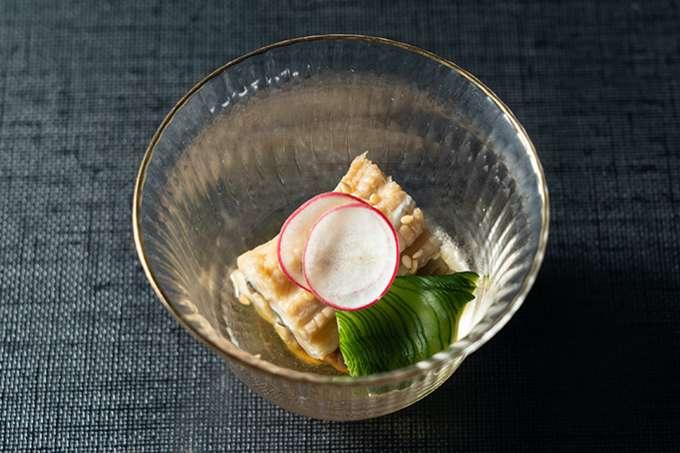
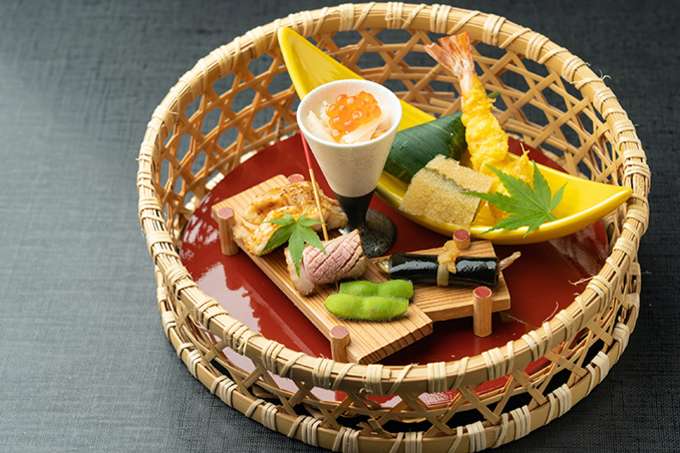
After this, comes the zensai, the main starters. The restaurant served a selection of about eight foods carefully displayed to look like a miniature scene of a small boat and a wooden walkway. It included small pieces of seafood, vegetables, and a little meat, all beautifully presented. The easiest way to eat these dishes is to start at the near right side. Anything can be served in the zensai, but not any of the items that will be included in the main dish.
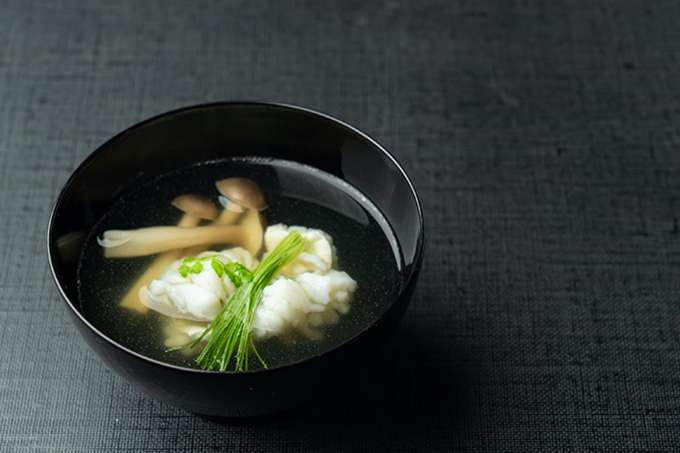
After the zensai comes the owan, a bowl of clear soup. It is appropriate to lift the bowl to your mouth and sip some of the broth before taking a bite of the fish or vegetables that are at the bottom of the bowl.
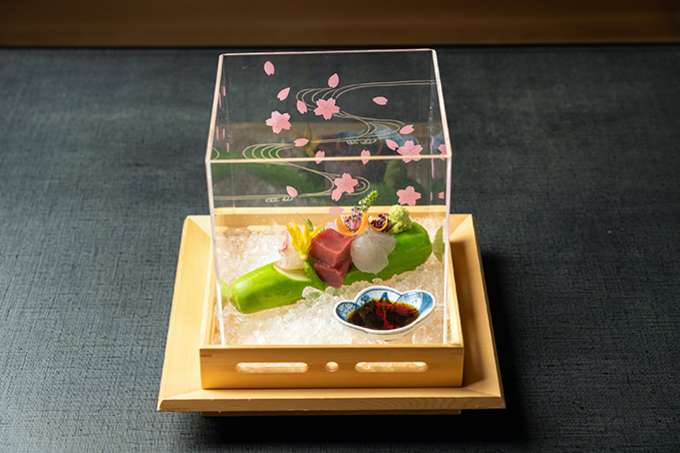
The otsukuri is served next. It is a selection of sashimi, which Sakura served on ice, contrasting nicely with the warm broth that had preceded it. Sashimi is always served with yakumi, a custom that started in the days before people had refrigerators. The yakumi is a kind of condiment but also a medicinal food, usually something with antibacterial properties that ensures a healthy stomach, even when raw foods are eaten. With sashimi, the usual yakumi is wasabi, which should be placed directly onto the fish rather than stirred into the soy-sauce dip. Other yakumi are herbs such as shiso leaves and seeds, myoga ginger, and sansho pepper.

If the restaurant wants to deviate from the standard kaiseki menu, than that dish is called kawaribachi, and can be a chance for the chef to balance seasonal ingredients or just to inject a flourish into proceedings. The kawaribachi that the restaurant served was boiled curdled soymilk prepared with a daikon radish garnish, which, is a lot more delicious than it sounds. Because so many of the ingredients are alien to foreign cuisine describing this kind of food accurately in English can sometimes lose some of the magic as there are few tangible flavours to latch onto. You just have to experience it for yourself to judge why the Japanese people hold kaiseki in such high regard.
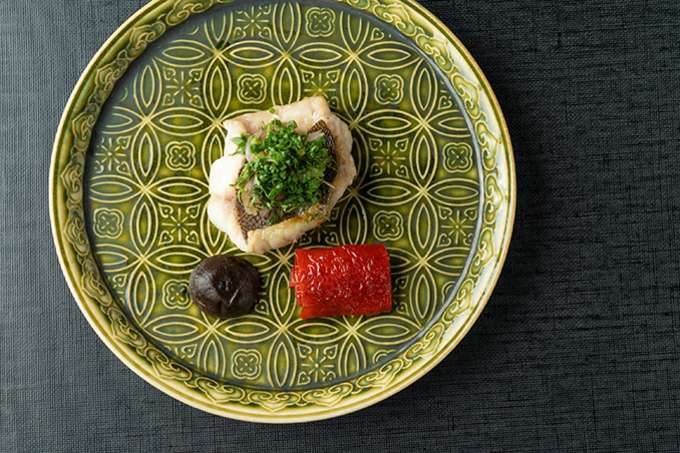
After the kawaribachi, the main dish of grilled fish or seafood, yakimono, arrives. As with Western haute cuisine, the courses gradually build to a climax.
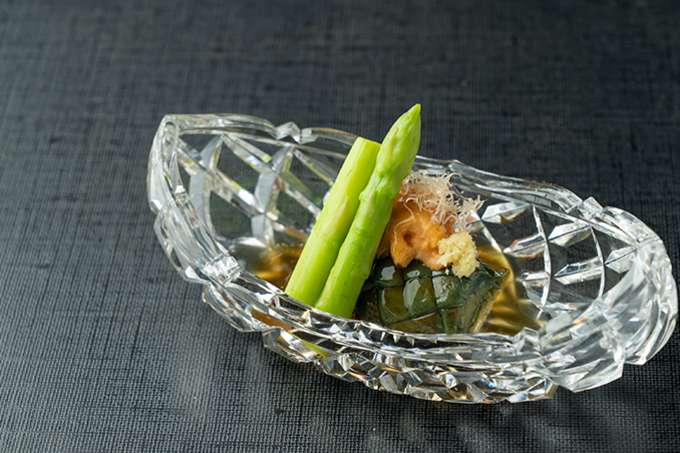
Hashiyasume is a light dish that revitalizes diners after they have eaten the comparatively strong flavour of grilled fish. The eggplant that was served with a little ginger and topped with sea urchin and some asparagus had a flavour and a texture that were delightfully complementary.
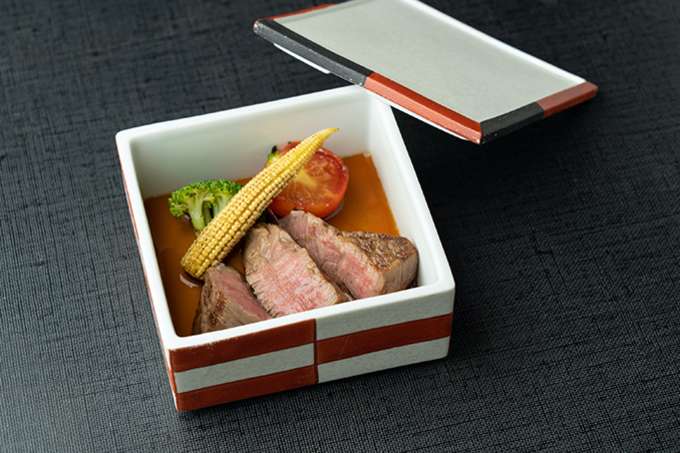
This was followed by shiizakana, another main dish—this time meat. Here, three cubes of Japanese beef had been lightly broiled and were served with tomato, broccoli, and baby corn. The beef was so tender it melted in the mouth and was a very tasty addition to the meal.
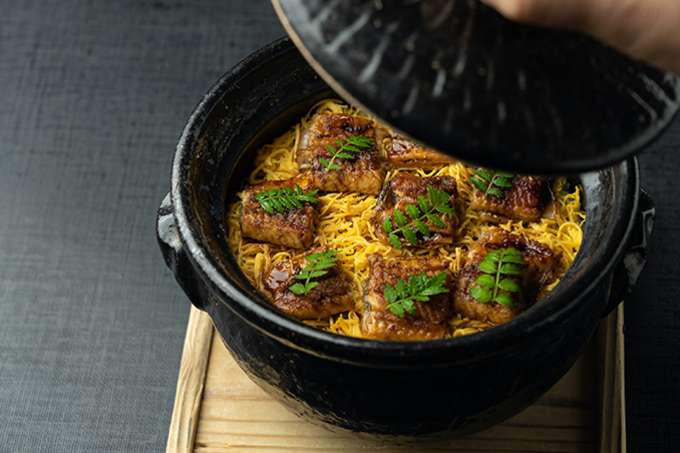
After all these dishes, shokuji (meaning simply “meal”) is served—rice, miso soup, and pickles. The rice had been slow cooked in a pot with salt-water eel. Normally, the meal would finish with seasonal fruit called mizugashi, but often a selection of desserts appears, and they are too tempting to resist even if you feel satiated at this point.

A small ice-cream monaka, green tea warabimochi, and kuzukiri with bean powder and molasses are typical Japanese seasonal sweets. They are pleasing both to the eyes and the palate.
Kaiseki is not only about the food but also the experience, and one leaves with a sense of completeness and harmony. This is created by the atmosphere and the presentation as well as the care taken in preparing the delicious feast. Enjoying a kaiseki meal is a really special cultural experience, a culinary indulgence not to be missed.
Contact Information
Japanese Restaurant Sakura at the Hilton Tokyo Odaiba
1-9-1, Daiba, Minato-ku Tokyo, 135-8625
How to Get There
The hotel is easily accessed by public or private transport from central Tokyo and is in the modern area of Odaiba, a large artificial island overlooking Tokyo Bay. Numerous large entertainment and shopping facilities are within walking distance, as are excellent views of the iconic Rainbow Bridge arching back toward mainland Tokyo. The rest of the city is only a train or taxi ride away.
Recommended Itineraries
Kaiseki ryori is available in most high-end hotels and ceases to be optional the deeper you go into luxury travel in Japan. The finest ryokan, particularly those located away from the popular tourist hubs, will offer only a kaiseki meal as part of their service. It really is engrained in Japanese travel culture and requires only a little knowledge to feel comfortable with it. Then you can sit back and enjoy the sumptuous banquet that is as much a feast for the eyes as the appetite. It can also be surprisingly affordable when booked as part of a package.
Related Links
Japanese Restaurant Sakura at the Hilton Tokyo Odaiba (English)
Map
Featured Cuisine
Kaiseki ryori is Japan’s take on fine dining and has endured as the peak of Japanese culinary tradition, unchallenged by imports from elsewhere in the world. To appreciate the harmony of local ingredients, flavors, and tableware is to embark on a gastronomic tour of Japan, and no journey across the country is truly complete without it.
-
Author
Author: Sheila
Sheila is an author, stylist, academic and researcher of kimono. Her passion for Japanese culture and history developed through the kimono and its possibilities as a fashion garment. She continues to share her love of kimono through television appearances, her books, Instagram and a variety of other media. “There is always so much more to learn!”
All information is correct as of the time of writing.
Please check for the latest information before you travel.





















































